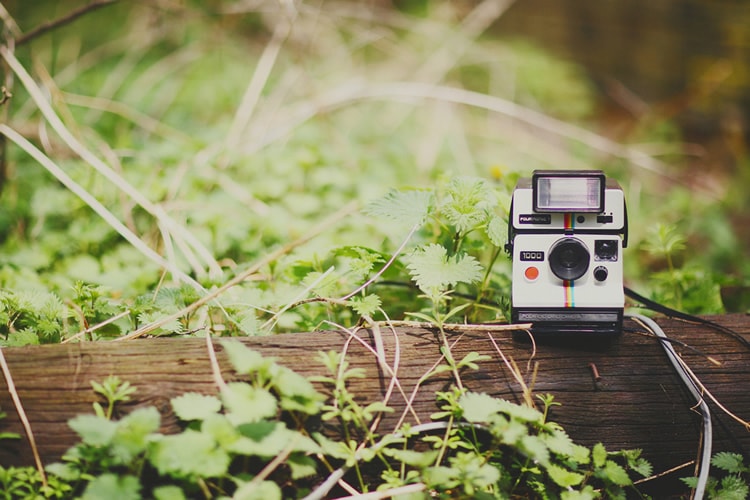5 Common Photography Mistakes to Avoid
We all make mistakes. One of my favorites is looking through the viewfinder and realizing that I forgot to take the lens cap off. And then there is the all too common cautionary tale from the photographer who failed to use the camera strap and ended up dropping a $2,000 camera. Oops!
Not all lessons have to be learned the hard way though. Knowing the common mistakes that plague most photographers can help you to avoid them. Here are five common photography mistakes, and tips to help you sidestep around them!

image by PhotKing ♛
Blurry Photos
Taking blurry photos is an all too common mistake. Amateurs and professionals alike often fall victim to this one. One way to help eliminate blur is to shoot with a shutter speed that has a denominator that’s faster than your focal length.
For example, use 1/60th of a second or faster for 50mm, or 1/400th second or faster for 300mm. An even better alternative would be to use a slow shutter speed with a tripod, and invest in a remote release which allows you to release the shutter without touching the camera, completely eliminating camera shake. Of course, if a tripod isn’t available or practical, you could try raising the ISO, or using an external flash.
For moving subjects, eliminating blur is a bit harder. You can set your camera to action mode, or manually increase your shutter speed. Another pro tip to reduce blur is to minimize shutter lag by keeping your trigger pressed halfway down until you’re ready to take the shot.
Boring Photos
The last thing you want is for your photos to look like everyone else’s. The best photos are the ones that stand out from the crowd. Sure, anyone can take an acceptable photograph, but what we’re really after is that shot that’s exceptional.
Don’t settle for lacklustre photos! Make it your goal to discover your own style. Try new framing techniques, and styles of photography. Get out of your comfort zone and challenge yourself to try something new, or to photograph a new subject. Or get in the car and travel to a new location. Be inspired, learn what works, and discover what you enjoy doing.
Photographing things that are of interest to you will help you to develop your own signature style.
Relying on Post Processing
Post processing software is a grand invention. It makes short work of many tasks that would have once been impossible back in the film and darkroom days. But with post processing also comes the risk of relying on it too much. Relying on post processing makes us more complacent with photography and less concerned about getting it right the first time, which can lead to uninspired photos.
Before shooting, make sure you do a check to make sure all of your settings are right. Take a test photo and check the lighting, composition, white balance, and exposure. It’s especially important to ensure that the lighting is decent, since poor lighting is one problem that post processing can’t fix. Analysing your photos and taking steps to correct any problems can save you time with post processing. Instead of relying on post processing, you will learn how to correct simple mistakes ahead of time. This will lead to stronger composition in your photos, and will improve your photography skills, helping you to grow as a photographer.
Poor Lighting in Photos
The right lighting can turn a good photo opportunity into an exceptional one. This is one reason that landscape photographers often set up at a vantage point and wait patiently until the light breaks through the clouds –exceptional lighting can make all the difference.
Make the most of available lighting. Or if possible, wait until the lighting improves to get the shot. When shooting outdoors, early morning and late evening usually provide the best light for both scenic shots and portraits. Overcast days are also great for portraits. The soft light of an overcast day will act like a soft box creating evenly lit subjects with minimal shadows. For indoor shots, avoid using your flash. Instead try to provide as much light as possible. Open curtains, or use lamps or strobes to fill in the scene. You could also try placing your subject sideways beside a wide window. The light filtering through the window will cast an even, beautiful light onto your subject.
Being Afraid to Make Mistakes
Ironically, the fear of making mistakes is one of the biggest mistakes that many photographers fall victim to. As a photographer, you should never be afraid of making mistakes. Mistakes are a part of the learning process, and are a sign that you are progressing. Fear of failure means that you won’t be able to truly give it your all –something that is needed in order to produce exceptional photographs.
If you get the chance to try something new, don’t be afraid to try it. No one ends up with a perfect photo every time they release the shutter; even professionals don’t get perfect shots every time. Don’t be afraid to try new things – and make mistakes. It’s all part of learning and developing your skills as a photographer.
Are there any common photography mistakes you would add to this list? Feel free to chime in via Twitter or Facebook!
